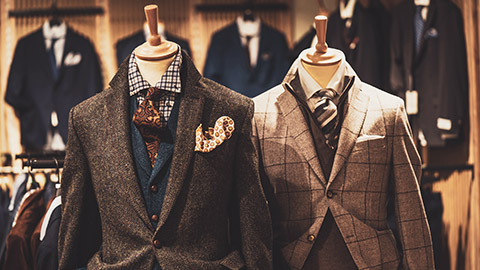Many factors affect consumer behaviour and their purchasing decisions. Getting to know the various drivers of consumer behaviour can help marketers understand consumers' buying tendencies and spending patterns.
Internal and external influences influence the consumer thought process, which can affect buying behaviour.
Internal influences:
- Age
- Personality
- Lifestyle
- Motivation
- Beliefs and attitudes.
External factors:
- Family
- Friends
- Social class
- Reference groups
- Sub-cultures. (Religion, age, geographical location, gender, status).
External factors can be categorised into both social and cultural group influences. These play an essential role in influencing consumer spending patterns and how an individual's culture and social environment can shape their attitudes, beliefs, and motivations when it comes to their purchasing behaviour.

Needs, attitudes, and beliefs influence the buying decisions a consumer makes. However, these variables and the buying process can also be influenced by our relationships with other people. Researchers focus on understanding how relationships and group influences can shape the behaviour of consumers. These influences are known as social influences.
Social influences
- Family
- Social class
- Reference groups.
Family
For most people, family plays a big role in influencing the behaviour of each of its members. This is because they:
- Consider each other's beliefs, opinions and attitudes when looking to make a purchase
- Influence the buying decisions of others by sharing their feedback regarding specific products
- Play different roles in the household purchase decision-making process
- They tend to make purchases that benefit the family instead of the one individual.
Consumer behaviour within a family can be heavily influenced by their decision‐making roles, making it difficult for researchers to collect data on, as the decision-making process can be quite complex and vary from family to family. Instead, marketers need to consider the potential influence that the group has on purchasers, particularly in devising their marketing and advertising campaigns.
Example: Consider car manufacturers who usually target men with their marketing campaigns. They would usually cater to identifying the main parts and functions of the car and focus less on the minor aesthetics. Today, however, they have turned to promoting female-targeted advertising campaigns, especially when looking to sell family cars, knowing that women within the family are becoming more involved in the decision-making process.
Look at the latest Volvo ad below, displaying their new electric model that hints at the subtle feminine touch and maintains their original masculine design.
The features of this car include:
- Pure electric
- A pink car charger
- Shopping bag hook
- Pink Volvo emblem.
The most successful ads will include messages that appeal to individuals within the household.
Reflect: Reflect on the purchases you make within your family. What are some of the buying decisions you are involved in?
They depend upon the nature of the product and the opinion and attitudes of individual family members. They may agree on different purchases; sometimes, one may have a strong personal preference which may change the preferences of other members even if they have different priorities.
A large proportion of purchase decisions are not made solely by an individual. Similarly, marketers need to consider the group's potential influence on purchasers and how they can communicate their message to all involved, particularly when devising their advertising campaigns. [Greg Elliott, Sharyn Rundle-Thiele, David Waller, Sandy Smith, Liz Eades, Ingo Bentrott.Marketing]
Social class
A social class can be defined as a group of people who have equal social positions in the eyes of others in society. Like family, our social environment will also influence individuals' purchasing decisions.
In every society, a social class exists and may include individuals:
- Occupation
- Education
- Age
- Geographic
- Social-economic status
- Lifestyle.
The following are examples of how the social environment can impact how consumers spend their money.
Occupation
Occupation is known to influence a consumer’s buying behaviour directly. Individuals will tend to purchase products that directly correlate to the nature of their jobs.

Example: An individual who works in the corporate industry may spend more money on suits and perfume, whereas an individual who works in hospitality or trade may not be interested in these products.
Education
Students may share the same interests and opinions as their peers. It may influence their decision-making process as they aim to fit in with their social group. This can dictate what laptop, phone, or stationery items they buy. Marketers target teenagers for that specific reason.
Example: Check out the apple ad below where they have signified that their products are used for new beginnings.
Age
The consumer's age can depend on the products they are interested in. Marketers aim to advertise their products to the target age group they feel would most benefit and meet their needs. As they say, you must understand your audience to market effectively.
These various age groups have different attitudes, beliefs, values and buying patterns regarding consumer behaviour and will look for certain products at certain points in their lives.
Examples may include:
- a young couple looking at honeymoon holidays
- a teenager looking at fashion or skincare
- individuals who have retired and are now looking to make large purchases like a sports car.
Example: This clever BMW ad showcases how a gentleman has waited for the day he retired to purchase his dream car.
Demographic
Where individuals live will influence their purchase, including that specific location's lifestyle and climate patterns.
Example: Kathmandu showcasing their new summer ad. The ad will only be effective in areas where summer has arrived, so they will specifically release this during the warm seasons and for those specific locations.
Social-economic status
Consumer behaviour regarding an individual's socioeconomic status will dictate how they spend and which products they choose to spend on. Individuals with a higher income can afford more expensive products than individuals who earn less. Marketers use this information to target their specific audience when creating a name for their brand. If they look to associate their brand with luxury, they will target higher-income individuals.
Example: Tiffany and co are known for their fine Jewellery and romance, specifically their proposals. Reflect on this commercial and identify who its target audience is.
Lifestyle
Marketers use lifestyle marketing to connect with their audience to immerse themselves with consumers' ideas and values. They help consumers envision using the product as a way of life and use it to better themselves. When marketers do this correctly, they help fill consumers' void.
Example: Live the moment. Capture the moment. Share the moment- Go Pro
The Go Pro ad goes beyond the product itself, and instead, they focus on the message of being an adventurer, travelling the world and capturing memories along the way.
Marketers are aware of the dynamics of each social class and target audience. They use this to tailor their marketing campaigns to meet the consumers' expectations and needs.
Reference groups
A reference group consists of the people an individual looks up to when forming attitudes, behaviour, and values. They may include:
- Work colleagues
- School peers/friends
- Club members
- Sporting community
- Opinion leaders (including religious, celebrities, health or political leaders).
Consumers take values from these groups and make buying decisions based on what these groups may accept. They will continuously compare what they may or may not buy based on their opinions. This is because the individual will seek the approval of the group and will try to conform to their expectations.
If a reference group purchases a product, those associated with the group will likely purchase the same product. The group will also take on that attitude if they deem the product unsatisfactory.
Example: Marketers will use celebrities to endorse products and mirror the typical consumer to reflect the consumers' values and beliefs.
When celebrities promote these products, it brings awareness to a brand and familiarity. When consumers admire or look up to these celebrities, they gain an instant connection and sense of trust, which are important variables in their purchase decision-making process.
Some examples are found below:
Watch the iconic New Zealand Toffee Pops ad with iconic rugby player Carlos Spencer.
Air New Zealand uses celebrities to endorse their airline.
These ads have used strategies focusing on a specific target audience to promote their brand and products. Watch the videos above to help you in completing the following activities.

Culture can be defined as the values, language, myths, customs, rituals, and laws that determine a group of people's behaviour, including artefacts and products, and are passed down from generation to generation. [Lamb, Charles W..MKTG3]
The food people eat, how they dress, what they think and feel, and what languages they speak are dimensions of culture. It is embedded within all things consumers do without a conscious choice, and this is because their cultural customs and rituals are ingrained in their daily habits.
Cultural factors can be split into the following categories:
- Culture
- Subculture
- Social class.
Culture
The consumer's cultural background will affect their values, behaviours, and preferences that are ingrained and inherent to the individual as they have been acquired over a long period of time from family members, their upbringing, and religion, including customs and traditions.
Subculture
Subcultures are different cultural groups that can be identified as a segment in the larger society. Some values, belief systems, rituals, and customs of members of the subculture are different to those of the larger society but still align with the most prominent beliefs of the entire society.
Major subcultural categories in Australia/ New Zealand include:
- Ethnicity
- Religion
- Indigenous background
- Lifestyle
- Age
- Gender
- Working Status
Social class
Social classes are where people in status are grouped and ranked in a social hierarchy. People in the same social class will often find that they have similar values, lifestyles, interests, and behaviours as others in the same group.
The more a marketer interacts socially with members of society, the better they will understand the real differences in cultural norms and beliefs. Watch the following video, which explains how culture affects purchasing decisions.
What factors influence your opinions, beliefs, attitudes and buying decisions for the following products?
- Toothpaste
- Toothbrush
- Furniture
- Magazines
- Computer
- Apps
- Smartphone
- TV
- Jewellery
- Shoes
- Sportswear
- Fashion
- Underwear.
Reflect on your answers and share these in the forum with your peers.

